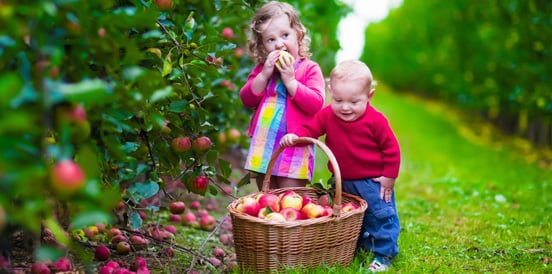Share Content
Article Link Copied
“I’ll Only Eat This if You Eat it First.”

It is known from psychology that young children prefer more sweet foods than sour foods. Less known is that children are very much affected by their environment when it comes to food preferences.
Text: Kristin Shutts
Humans have an important daily task: We have to figure out what to eat for all our meals and snacks! And unlike koalas—who have just one food source (eucalyptus leaves)—humans can and do eat many different kinds of things. Consuming a varied diet can be fun and exciting, but it also means we have to think a lot about what we can and should eat. What’s safe to eat? What’s appropriate? What’s healthy? These decisions are hard for adults, but they present a special challenge for infants and young children who have had a lot less experience figuring out what to eat. How do they do it?
Babies have a sweet tooth
Psychologists have known for a long time that even infants have a couple tricks up their sleeve when it comes to eating. For example, infants prefer sweet (over sour) tastes at birth, and infants also like the taste of foods they have tasted before (rather than new tastes). Yet infants are far from perfect at choosing foods: As any parent knows, left to their own devices, infants sometimes put dangerous, disgusting, and inappropriate things their mouths. What other tools might infants have for deciding what to eat?
For the last several years, my collaborators and I have been testing the idea that infants look to people around them for guidance about what to eat. Humans at any age rarely face the challenge of food selection alone. People often work together to acquire and prepare foods, and eating often occurs in social contexts—for example, at the family dinner table. Infants therefore have numerous opportunities to watch members of their culture choose, cook, eat, and react to different kinds of foods in social settings.The social context of eating therefore affords opportunities for learning what’s good to eat.
In one study with one-year-old children, my collaborators and I tested whether infants look to members of their culture when deciding what to eat. To do this, we showed infants movie clips featuring two different women: One woman spoke in the infants’ native language (English), while the other spoke in a language that was foreign to infants (French). Each woman also ate enjoyed a different kind of food in the movies. For example, infants saw the English speaker eat one kind of fruit sauce from a green bowl, and saw the French speaker eat another kind of fruit sauce from a purple cup. (Other infants saw the opposite pairings of people to foods.) After watching the movie clips, infants were given a choice between the two foods and we measured which food they chose. We found that infants chose the food that had been endorsed by the woman who spoke in their native language. In other words, infants tended to copy the food choice of another member of their culture. Thus, even in infancy, children are interested in, and affected by, what the people around them are eating. And they are especially interested in what members of their cultural ingroups are up to.
The environment affects children while eating
Other research has shown that even beyond infancy, children are quite affected by what people around them are eating. One of my favourite studies was conducted several years ago by a researcher named Leann Birch. She was interested in how we might get preschool-age children to eat foods they claim not to like. Realizing the power of peers, Birch decided to seat children next to peers who liked foods that children themselves didn’t like. So, for example, if Mary said on Day 1 that she didn’t like carrots, Birch had Mary spend snack time for a week with children who really liked carrots. When Birch measured children’s preferences at the end of the week, she found that they had changed their minds. Children who previously hadn’t liked one food (for example, carrots) came to enjoy that food if they had been seated at a table with other children who liked it. Thus, one tip for parents who are having trouble getting their children to eat certain kinds of foods is to try to have them socialize with other children who have different or more diverse food preferences.
Although we have gathered a lot of information over the past few years about how children develop food preferences and eating behaviors, there is still a lot of work to be done. In my lab right now, we are particularly interested in what other factors (besides the language someone speaks) affect infants’ interest in different kinds of foods. For example, do infants tend to copy the preferences of other infants (just like children copy other children)? Additionally, what’s the best way to ensure that infants and children develop healthy eating behaviors from the start so they can grow into healthy adults? Whatever the answer, it’s likely that other people—including friends, parents, and teachers—play an important role.